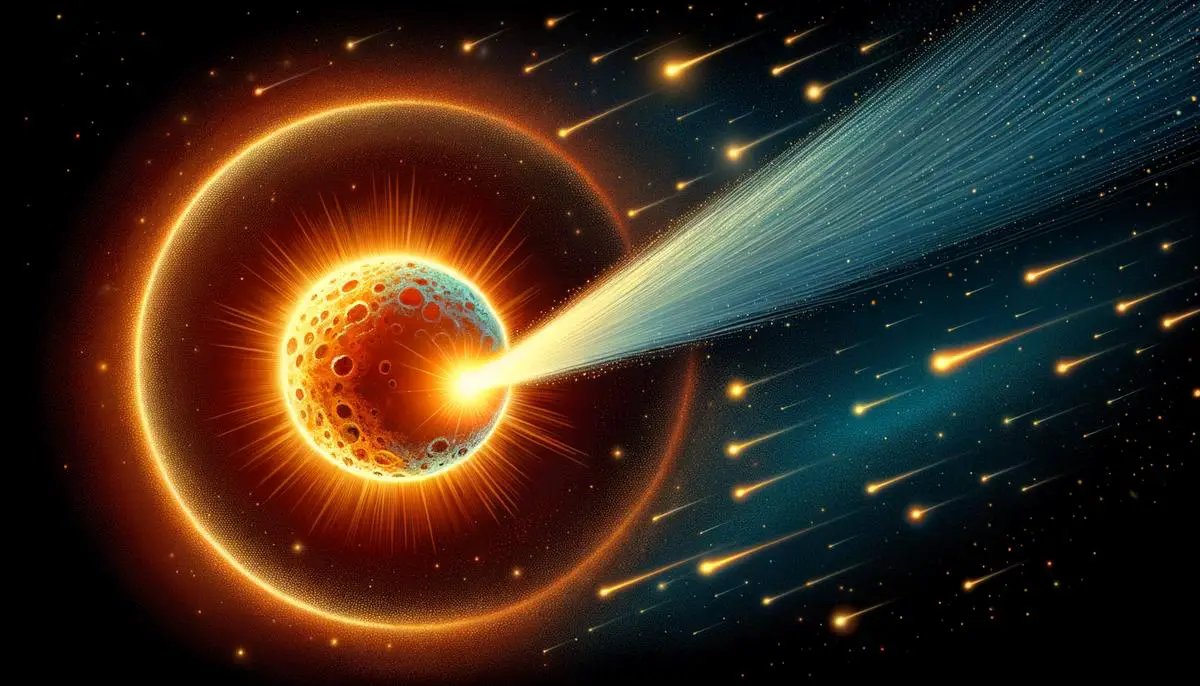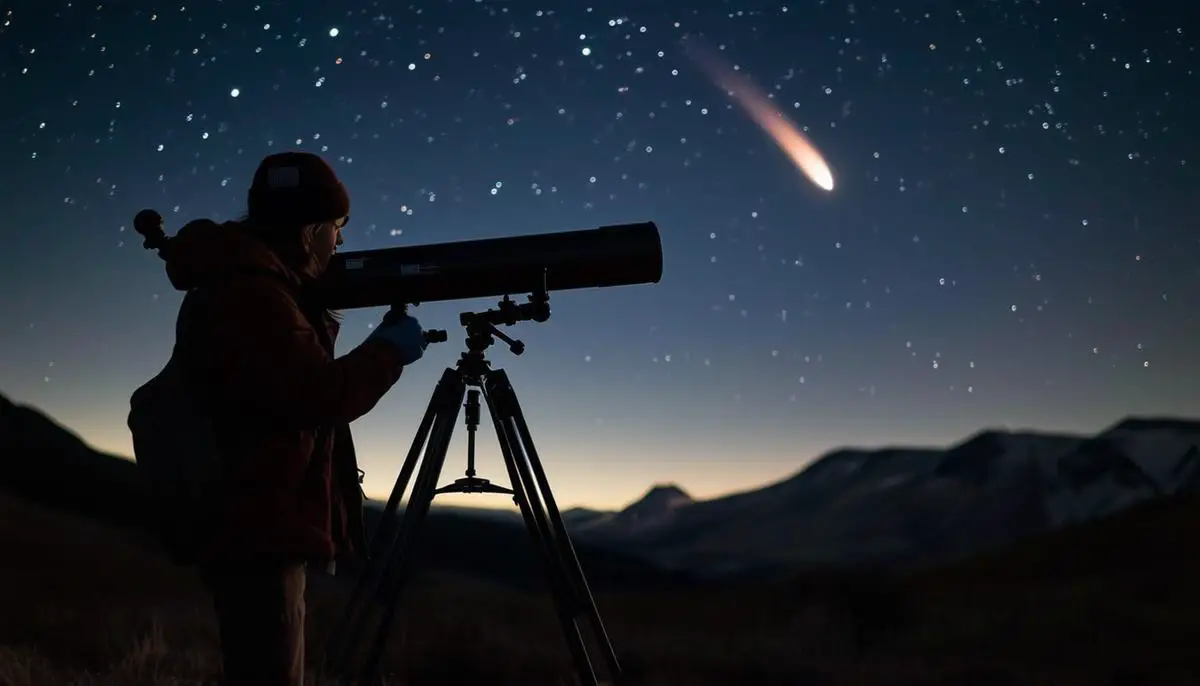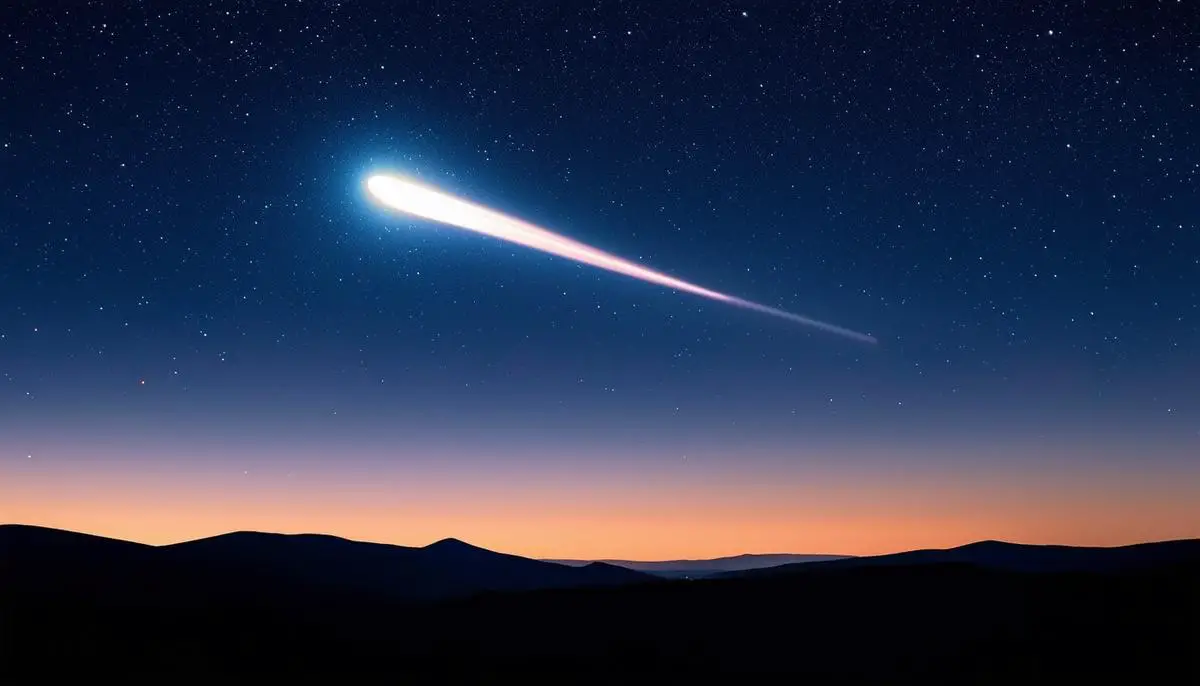Discovery and Characteristics of Comet A3
Comet C/2023 A3, also known as Tsuchinshan-ATLAS, was independently identified by the Purple Mountain Observatory on January 9, 2023, and confirmed by the Asteroid Terrestrial-impact Last Alert System (ATLAS) in South Africa on February 22. This nonperiodic comet takes over 80,000 years to complete one orbit around the sun.
Upon discovery, Comet A3 was 7.3 astronomical units from our sun, with a magnitude of 18. It travels at approximately 80.74 kilometers per second, making it one of the fastest objects in our solar neighborhood. Through a telescope, its position shifts noticeably against the star backdrop in just 15 minutes.
Comet A3 features a large coma and a long tail, formed as the sun's heat and solar wind strip away layers of ice and dust. Its designation "C/2023 A3" indicates its nonperiodic nature, year of discovery, and order of discovery within that period.
Despite rumors of fragmentation in July, Comet A3 has largely maintained its integrity, demonstrating the unpredictable nature of these celestial bodies.

Path and Visibility
Comet A3 reached its perihelion on September 27, 2024, and will make its closest approach to Earth on October 12, 2024, at a distance of 43.9 million miles. Initially visible mainly in the Southern Hemisphere, it will become observable in the Northern Hemisphere in early October.
Optimal viewing times begin on October 11, as the comet emerges from twilight. By mid-October, it should be visible in the evening southwestern sky. The comet is expected to reach a brightness of magnitude 2.0 or slightly brighter, rivaling some of the most luminous stars.
Moving at 290,664 kilometers per hour, Comet A3's position against the stars changes noticeably from night to night. Its tail of dust and gas, illuminated by the Sun, should be visible even without a telescope.
Tips for Best Viewing:
- Find a location with minimal light pollution
- Ensure an unobstructed view of the southwestern sky
- Use binoculars or a small telescope for enhanced observation
- The comet's brightness may allow for naked-eye viewing as well

Perihelion and Brightness Predictions
Comet A3's perihelion on September 27, 2024, was a critical moment in its journey. Despite concerns about fragmentation due to intense solar radiation, the comet maintained its structural integrity.
Predicting a comet's brightness is challenging, but estimates suggest Comet A3 could reach magnitude 2.0 at its peak. This would make it visible to the naked eye and potentially one of the brighter objects in the night sky.
The forward-scattering of sunlight by the comet's particles may enhance its apparent brightness from Earth's perspective. This phenomenon occurs when sunlight bounces off the comet's ice and dust particles, potentially amplifying its luminosity.
"While comparisons to historical comets like McNaught (2007) provide context, each comet's behavior is unique. Comet A3's ultimate display will depend on various factors, including its composition and interaction with solar radiation."

Observational Challenges and Tips
Observing Comet C/2023 A3 Tsuchinshan-ATLAS requires some preparation and patience. Binoculars or a small telescope can greatly enhance the viewing experience, allowing observers to see details of the comet's tail and coma. For stability, consider using a tripod with binoculars.
Atmospheric conditions play a crucial role in visibility. Haze, fog, or poor air quality can obstruct clear observation, especially in urban or desert areas. Seeking out dark-sky locations away from city lights can significantly improve the viewing experience.
Timing is essential. The comet will be visible in the western sky shortly after sunset, climbing higher each night. Choose a viewing site with an unobstructed horizon, free from trees, buildings, or other obstacles.
Persistence is key when observing comets, as their behavior can be unpredictable. Be prepared for changes in brightness or appearance, and remember that each observation is a unique opportunity to witness a celestial event.

Future Trajectory and Scientific Interest
Comet C/2023 A3 Tsuchinshan-ATLAS's long orbital period of over 80,000 years makes it a valuable subject for scientific study. As it moves through the inner solar system, astronomers have a rare opportunity to analyze its composition and behavior.
The comet's passage allows scientists to gather data on its structure, tail formation, and interaction with solar radiation. This information can provide insights into the early solar system and the conditions in the distant regions where the comet originated.
Studying Comet A3 helps refine models of cometary behavior and improves our understanding of how these bodies evolve over long periods. The data collected during this visit will contribute to broader knowledge of celestial mechanics and the dynamics of long-period comets.
As technology advances, future observations of Comet A3 or similar bodies may yield even more detailed information, building on the knowledge gained from this current passage.

Comet C/2023 A3 Tsuchinshan-ATLAS offers a unique opportunity for scientific discovery and public engagement with astronomy. Its journey through our solar system showcases the dynamic nature of celestial bodies and the ongoing process of scientific inquiry in understanding our cosmic neighborhood.
- Green DWE. Central Bureau for Astronomical Telegrams. Cambridge, Massachusetts.
- Sekanina Z. Jet Propulsion Laboratory, California Institute of Technology.
- Marcus JN. Pathologist and amateur astronomer.
- Lefaudeux N. French optical engineer and amateur photographer.
- Mattiazzo M. Amateur astronomer, Swan Hill, Victoria, Australia.
- Masi G. Virtual Telescope Project.
- Rao J. Space.com skywatching columnist and meteorologist.
![]()
